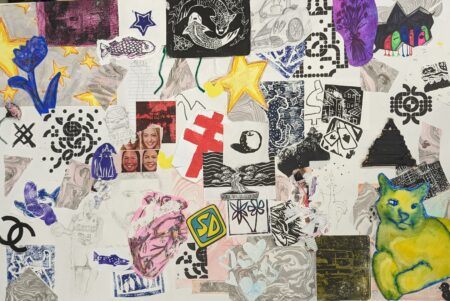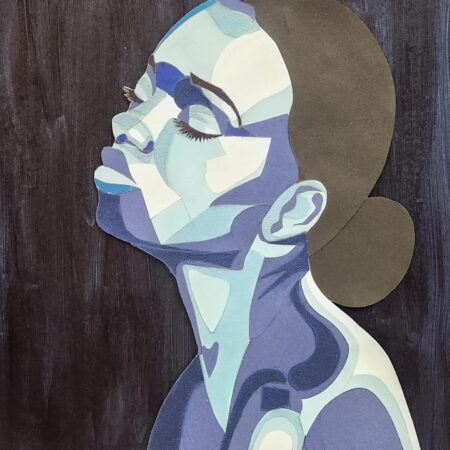Teaching with Contemporary Art
Artwork as Kinship: Together We Will See It Through
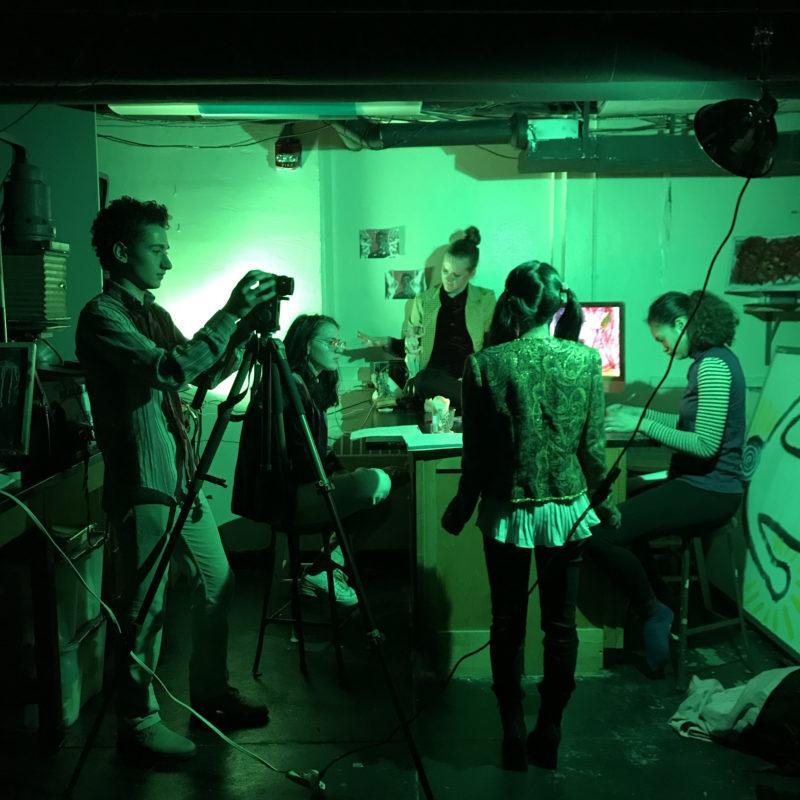
Photo by Andrea Mancuso
The pandemic and political climate have reshaped the way we experience community and public space. “Together” has been replaced by quarantine or by an increasingly tenuous “6 feet apart,” and political parties and rallies are deliberately divisive, rather than unifying. Isolation permeates all aspects of our life, despite our growing interdependence on each other and on other organic and abiotic forms. In my neighborhood, banners reading “Together We Will See This Through” hang in home windows and on shop doors. This phrase reframes the 20th century’s individualistic “See it Through” slogan by optimistically adding “together” as a new-world necessity. As artists and educators we are being called on to strengthen the caring embrace of community. Artmaking can build kinship; community can happen daily in a rich art studio culture and in an inclusive and caring classroom, and everywhere in between, where creativity flourishes. Can we activate new forms of working together in order to generate a sea-change for knowing and caring for each other and the world? Intentional collaboration across disciplines is an essential part of my practice as an artist and educator.

Photo by Andrea Mancuso
As we face these individual and societal challenges, the power of art to build fellowship between students has been tested. During times of mourning and protest, we gather and stumble to figure out our interconnectedness. The lessons learned from our time ‘apart’ were reverberated for me in an unprecedented trauma in my city this year and in a remarkable collaboration in my class. In May 2022 I started the annual collaboration between our Acting and Filmmaking classes. The weekend before we started this collaboration, our city experienced a mass shooting. I worried whether our project was too much to ask this group of students, but was reassured when I considered that the collaboration project is first and foremost about building community. On our first class back together as a school community, my colleague Kristen Kelley and I greeted a group of 40 sophomore arts students in a combined art class. This was our first time being together as a class. The circumstances I encountered on this day deepened my appreciation for the power of art to build community.
Our school day started with a short school assembly that addressed the shooting in our city, and our class started with a check-in. We asked the students, “What was your major takeaway from our school morning meeting? What stays with you?” We gave them a chance to voice whatever they were feeling, whether or not it related to the shooting. We listened closely to each other as we expressed shock, sadness, confusion and support; it was a powerful collection of emotion. Together, we felt good about the group and our ability to work together as we moved into the planned project. For the project, the students would make a film based on a manifesto we would write together as a class. We used the 2015 artwork “Manifesto” by Julian Rosefeldt as a guiding example. Rosefeldt’s artwork consists of 16 choreographed short films that weave together narrations drawn from the tradition and literary history of artist movement manifestos. Rosefeldt’s films are set in different but particular locations, each with a unique cinematic style, and performed by actress Cate Blanchet who transforms into a different character in each film. We watched “Manifesto 13” which is set in an elementary school and Blanchet plays a teacher. It includes a narration of filmmaking manifestos such as Stan Brachage’s 1963 “Metaphors on Vision” and Lars Von Trier’s “Dogme 95.”
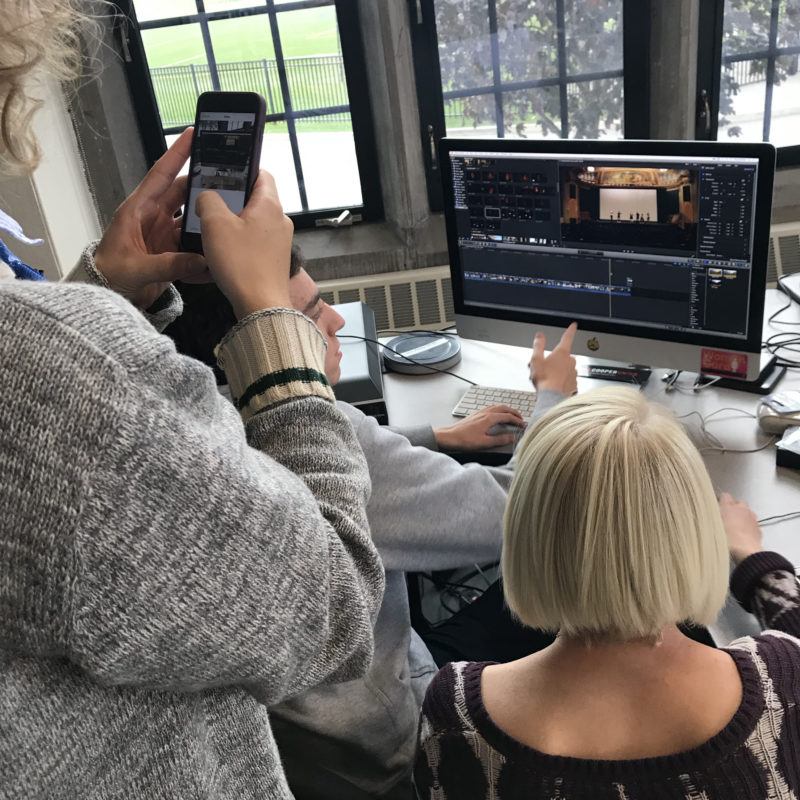
Photo by Andrea Mancuso
Our studio work on this project started with students working in pairs. The students asked each other two questions: “What do I need to feel creative?” and “What can I give to someone to help them feel creative?” They shared their answers, and after listening to everyone, we asked them to quickly make a shape that expressed their ideas, using only their bodies. The students (still paired together) gave each other high fives, piggy back rides, formed hearts with their hands, patted each other’s backs, and hugged each other. It was exciting to hear them verbalize basic needs for creativity along with ways they could support each other. The lively physical performance of their mutual support was fun and joyous to see. It was energizing and put us all in the collaborative mindset, ready to build artwork together.
We gathered all of the answers into one document that would be our class manifesto. Here is an excerpt:
In order to create we need: Patience
In order to create we need: Energy
In order to create we need: Space
In order to create we need: Laughter
In order to create we need: Positive Encouragement
In order to create we give to each other: directing and editing skills
In order to create we give to each other: enthusiasm
In order to create we give to each other: tough honesty
In order to create we give to each other: hard work and precision
In order to create we give to each other: smiles and hugs

Photo by Andrea Mancuso
The students produced films using all of the text in the manifesto and worked in groups of six, split evenly between acting and film students. The resulting films gave voice to their words and juxtaposed them with enactments of the text and contrasting images to express their ideas. They remained focused on expressing what we need to be creative for ourselves and what we can give to others to help them create.
During the production and at our reflection we asked, What is collaboration? Does it have a singular definition or does it get defined through action? Is it simply working together to produce something, or can it have a broader and more ambitious effect? As a class can we build on the power that a group of students and colleagues can summon when they commit to make things together? We talked about the Beat generation writers William Burroughs and Brion Gysin, and their speculation that collaboration — what they call “the third mind” — is not just playing nice together, but rather is a “complete fusion in a praxis of two subjectivities,” a mystic combination of two different perspectives that create a new viewpoint, “two subjectivities that metamorphose into a third.” Gysin and Burroughs imply that there is more to collaboration than compromise or merely working together. In fact, collaboration can be a generative practice in itself, a way to conjure another presence, a method to bring forth a new entity from the contributions of the collaborators. The third mind appears when all these components click. It’s a type of speculative philosophy that can produce creative gold. It also can lead a class to appreciating each other and the holistic value of their studio practice, and to build a commitment to each other through empathy and shared work.
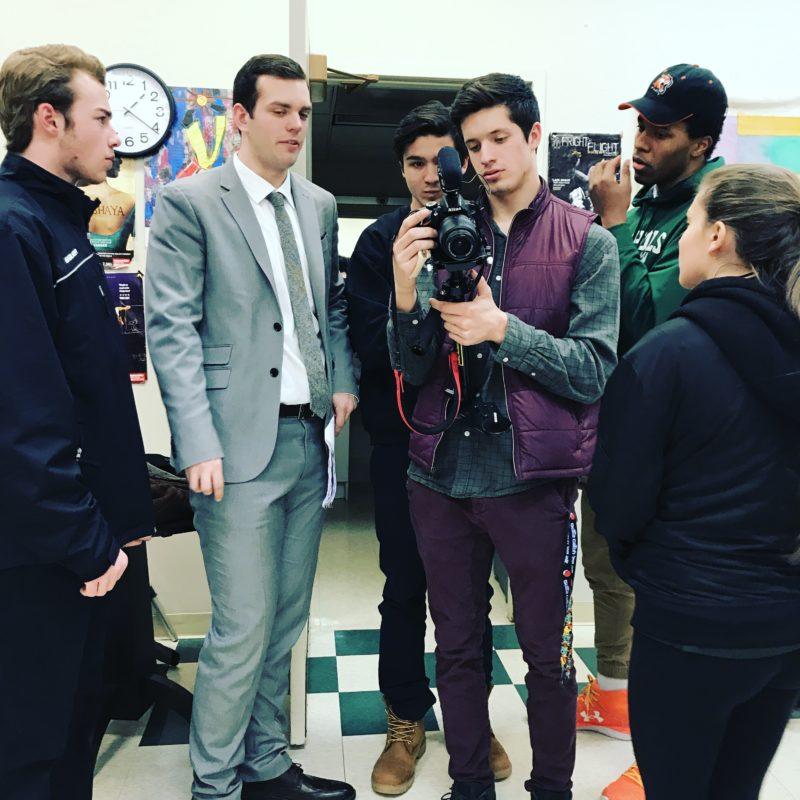
Photo by Andrea Mancuso
Many contemporary artists put community front and center in their practice. Artist Asad Raza proposes a new materiality of artmaking that can take the form of a conversation, or a relationship. This summer, I participated in a Raza’s project as one of a small group of artists that sailed from Buffalo, New York (Raza’s hometown, and mine) to Cleveland, Ohio. We spent three days and two nights on Lake Erie. The group consisted of three sailors, two artists from Cleveland, three artists from Buffalo, one from Provincetown, and Raza himself. Over the course of the journey we got to know each other and played music together to build a performance to present upon our arrival in Cleveland at the FRONT International 2022 Cleveland Triennial for Contemporary Art.
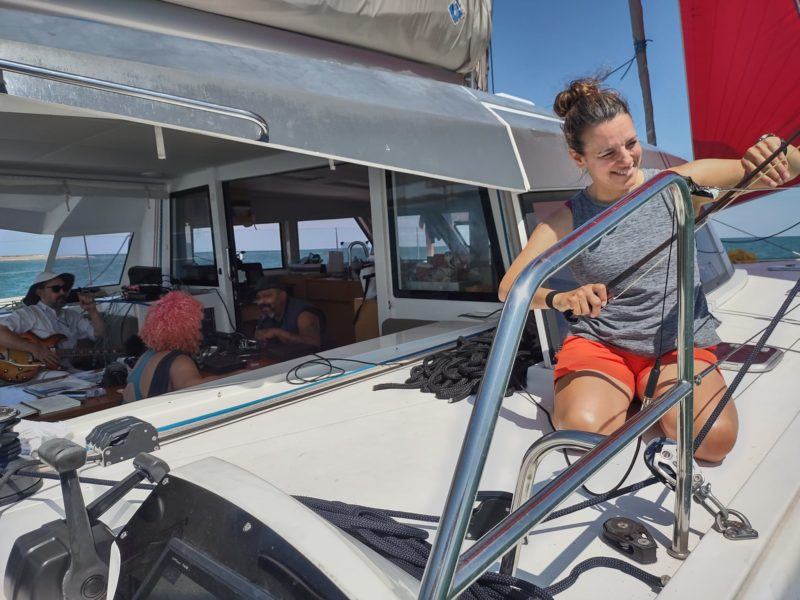
Photo by Andrea Mancuso
The experience of being on the lake drew us close. We were tossed through intimidating waves, felt and tasted the lake’s freshwaters, breathed in the transformative night sky, and listened as our voices and instruments mixed with the sounds of boat and water. The project was an immersive lesson in connection between our two cities, or geography, the bugs and particles in the atmosphere, and each other.
As I reflect on the experience of this boat journey and a song, mantra, and performance. I refocused my identity through the land, water and collaboration rather than through my personal narrative. It makes me ask: “What can we find that connects ourselves to the thing that connects us to each other?” and “Can we learn from that?”
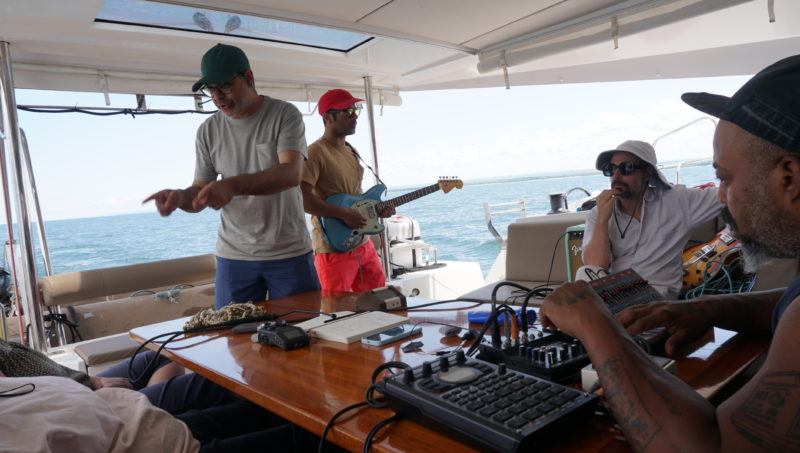
Photo by Andrea Mancuso
Buffalo is situated on the territory of the six nations of the Haudenosaunee. When Raza scouted the Lake Erie watershed he met with the Indigenous people from the Cattaraugus and Seneca Nations. Dr. Joe Stahlman from the Seneca-Iroquois National Museum and Language Institute joined the artist group and helped plan our boat voyage. Raza composed a lyric in the Seneca language for us to build on:
Asad Raza, Refrain from “Delegation” (2022)
Dëjinyatsa’së’ae’ (deh-jee-nya-cha’seh’ay)
Dëjinyatsa’së’ae’ (deh-jee-nya-cha’seh’ay)
Ga:weh ni:s’ah? (gah-wey nees’ah)
Ga:weh ni:s’ah? (gah-wey nees’ah)
Gadögweta’ (gah-doh-gway-tah)
Gadögweta’ (gah-doh-gway-tah)
[Seneca]
Our paths shall cross again.
Our paths shall cross again.
Where are you?
Where are you?
I am well.
I am well.
[English]
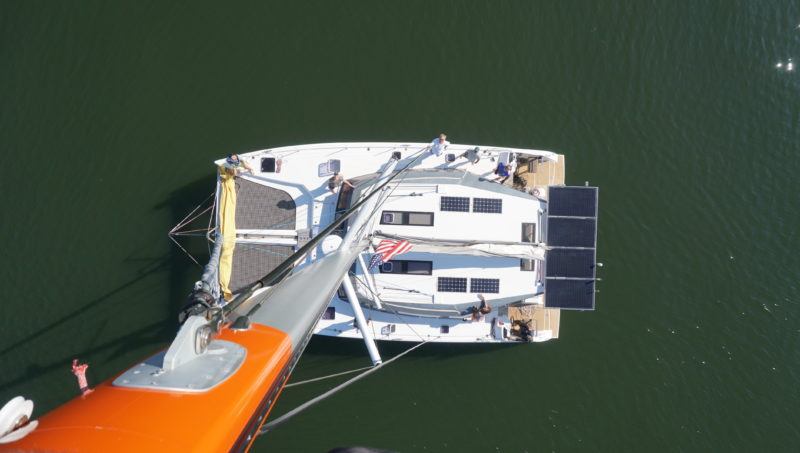
Photo by Andrea Mancuso
Collaboration with this mindset is a generative process. As Raza writes, “The artwork happens and exists in the network of humans, non-human life, and also non-living materials and objects. The artwork is a type of kinship.” The kinship may manifest as a third mind, and can then make roots and grow into a non hierarchical rhizomatic structure building new networks of connection.
The 2020s have been marked with division by design, and now more than ever we need to reconnect, authentically. Aspirational collaboration projects that strive to conjure the third mind and build rhizomatic relations between people and other organic and abiotic forms can grow durable connections and heal gaps.

